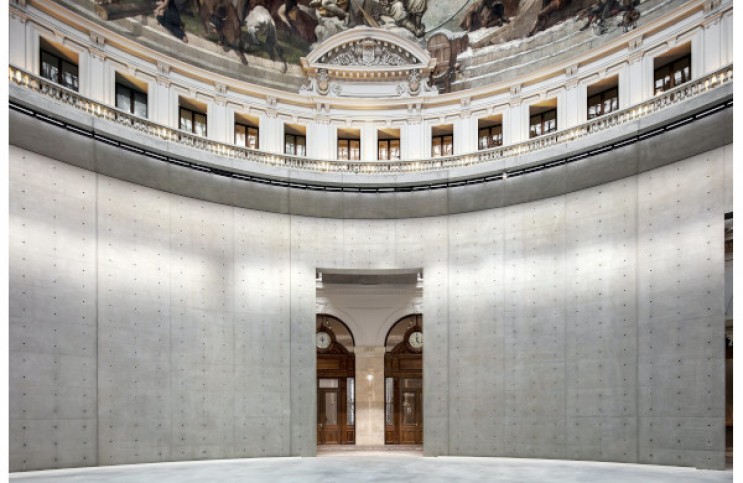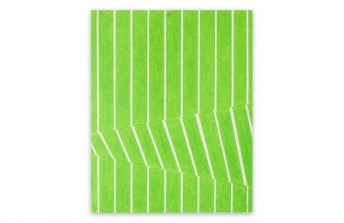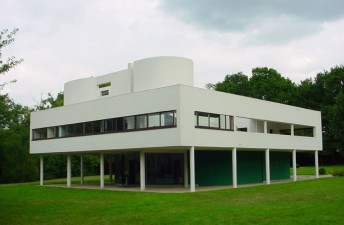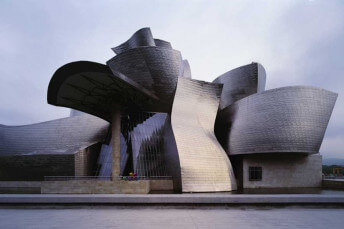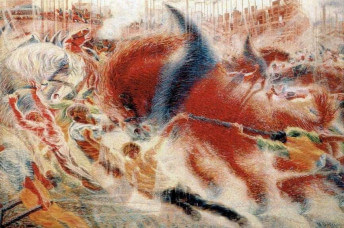Waiting (Patiently) for the Bourse de Commerce–Pinault Collection
Jan 13, 2021
After five years of watching and waiting, Parisians were told this week that because of ongoing COVID-19 restrictions, they must wait just a bit longer before going inside the much anticipated Bourse de Commerce–Pinault Collection, the newest contemporary art museum to open in Paris. Financed by French billionaire François Pinault, the museum will primarily showcase his own collection of 20th and 21st century art, which includes more than 5,000 works. The museum is the latest occupant of a centuries old site most prominently used in the past as a stock exchange (hence the name). Most aspects of the building date to the 19th century, although one of its most beloved architectural elements, known as the Medici Column, dates back to the 16th century. It goes without saying that anyone bold enough to transform a historic Parisian landmark into a new contemporary art museum should be committed to creating something extraordinary. By all accounts, it looks as if the Bourse de Commerce–Pinault Collection will satisfy. Pinault plunked down tens of millions of dollars to renovate the building and to secure a 50-year lease from its owner, the City of Paris. He hired his longtime collaborator Tadao Ando to re-design the interior of the building. Over the past 15 years, the self-taught Japanese architect has also worked with Pinault on three other projects, all in Venice: two museums and a theater which hosts a variety of cultural and educational programming. In addition to hosting permanent exhibitions of the Pinault collection, the Bourse de Commerce will also host temporary, in-situ installations as well as exhibitions contextualizing the works in the collection within broader, global art trends. I have no doubt it will become a must see destination for art tourists visiting the city, however I also cannot help but notice how different it is from its competition.
A Pre-Modernist Gesture
The most obvious comparison to the Bourse de Commerce–Pinault Collection would be the other recently opened, Parisian museum financed by a French billionaire: the Fondation Louis Vuitton. Designed by Frank Gehry, the FLV is undeniably contemporary. It’s exterior welcomes the outside in, and the whole of the architecture feels as though it is open in every conceivable way to the public consciousness. The Bourse de Commerce feels decidedly different, inside and out. It harkens back to pre-Modernist days, and not only because of its historic architecture. The way the viewer experience has been engineered also feels like a throwback. Pinault and Ando say they have created “the ideal conditions for the viewer to experience art.” The question is who gets to define that ideal. Ando designed a massive, concrete cylinder that dominates the main rotunda. Viewers must transport themselves first inside the building from the street, and then inside the cylinder; or, alternately, up a staircase to a catwalk, where they can look down into the cylinder or up at the glass dome or the massive painting surrounding the rotunda. That transition, Ando says, is a sort of cleansing experience to prepare them to have a personal encounter with art.
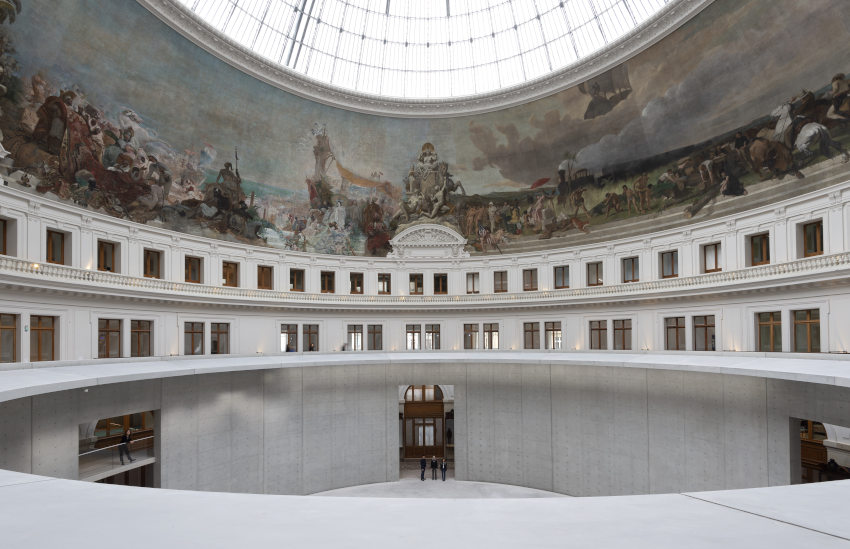
Bourse de Commerce - Pinault Collection. Photo by Marc Domage.
Although admittedly eye-catching, the cylinder unapologetically defines the art viewing experience as something separate from ordinary life. The cylinder acts as a sort of art theater in the round—an intentionally manufactured zone in which to have a controlled aesthetic experience. The design declares the supremacy of the institution, the curators, and the designers. This is a time-tested strategy with which to create a museum, to be sure, but it is surprising for 2021, as it so clearly bucks the trend of the past century of art history. From the Bauhaus and Neo-Concrete Movement, to Performance Art, Land Art, and Happenings, all the way to contemporary movements like Graffiti Art, Social Practice Art, and Placemaking, all of the momentum from Modernism onward has been towards claiming an art that is inseparable from everyday life. The Bourse de Commerce–Pinault Collection goes the other direction.

Bourse de Commerce - Pinault Collection. Photo by Maxime Tétard, Studio Les Graphiquants, Paris.
A Circular Paradise
The greatest compliment I can pay The Bourse de Commerce–Pinault Collection is that the space is confident. However, its confidence borders on feeling authoritarian—as though it is the product of a powerful elite force trying to shape the culture after itself. It reminds me of one of those science fiction movies in which the wealthy elite flee the planet to live in a manufactured, circular paradise of a space station, where the ills of human existence are kept at bay. The Bourse de Commerce–Pinault Collection comes as close to that futuristic vision as any other earthly building I have seen. Ego was definitely a major facet of the project. The building is a reminder of those who built it, paid for it, designed it, and curated this public experience. At least this manufactured, circular paradise is not only for the elite. It is accessible to anyone who has the means to arrive at its doors and pay the entrance fee.

Bourse de Commerce - Pinault Collection. Photo by Patrick Tourneboeuf.
Like any museum, of course, I am certain the goal of Pinault and Ando and the many others who have created this singular art viewing environment was to create a space that would not compete with the art, but complement it—and most importantly would provide opportunities for viewers to experience the art in the way the artists intended. Yet, Ando clearly also wanted to provide moments of architectural grandeur separate from the art. I say that not as a criticism, but just as a statement of fact. As ostentatiously as Frank Gehry puts himself all over the outside of his buildings, Ando put himself all over the inside of this one. The one key aspect of the Bourse de Commerce architecture that does allow everyday life to readily enter the space is the glass dome over the rotunda. The ever-changing daylight shines through reminding viewers that nature is just beyond the walls, so if any of them do decide they want a little more agency over their experience of art, all they have to do is go back outside.
Featured image: The grand rotunda inside the soon-to-open Bourse de Commerce - Pinault Collection in Paris. Photo by Patrick Tourneboeuf.
All images used for illustrative purposes only
By Phillip Barcio
